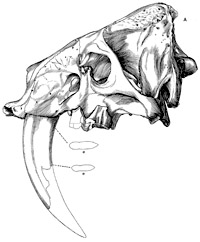Museum, University of Nebraska State

Bulletin of the University of Nebraska State Museum (1924–2023)
Date of this Version
6-1968
Document Type
Article
Citation
BULLETIN OF The University of Nebraska State Museum, VOLUME 8, NUMBER 2 JUNE 1968, PP. 189-207 FIGS. 1-10
Abstract
Biometrical study of morphology and development in a sample of 100 cranidia, 94 pygidia, 26 free cheeks, and 9 complete specimens of the trilobite Ameura sangamonensis (Meek and Worthen) from the Bonner Springs Shale (Pennsylvanian; Missouri Series) in eastern Nebraska indicates that the dominant growth pattern was isometric. Evidence supporting this conclusion consists of rectilinear size relations among eight pairs of cranidial dimensions, three pairs of pygidial dimensions, and three pairs of dimensions of the free cheeks. Qualitative changes in pygidial morphology during development include a progressive decrease in prominence of the border, increasing width of the posterior border relative to the lateral borders, and a progressive change in outline from a smoothly rounded semi-circular margin to one that is subtriangular or subparabolic. All the complete specimens in the sample are holaspides. There is some indication of point clustering on scatter diagrams among the smallest cranidia which suggests that the sample may contain a few late meraspides. However, if meraspid cranidia and free cheeks are present, they are morphologically very similar to the small holaspides.
Included in
Entomology Commons, Geology Commons, Geomorphology Commons, Other Ecology and Evolutionary Biology Commons, Paleobiology Commons, Paleontology Commons, Sedimentology Commons


Comments
Copyright 1968 University of Nebraska